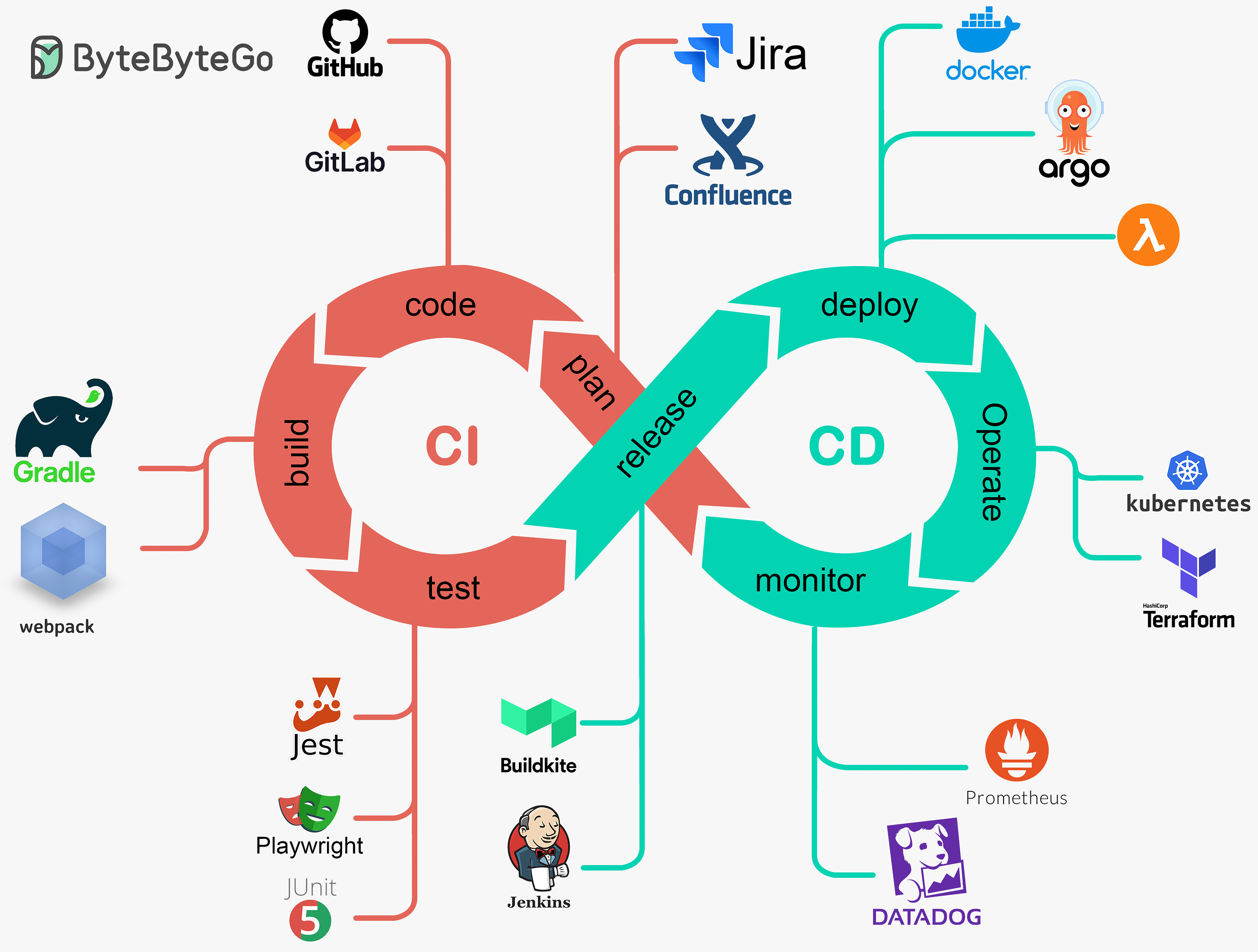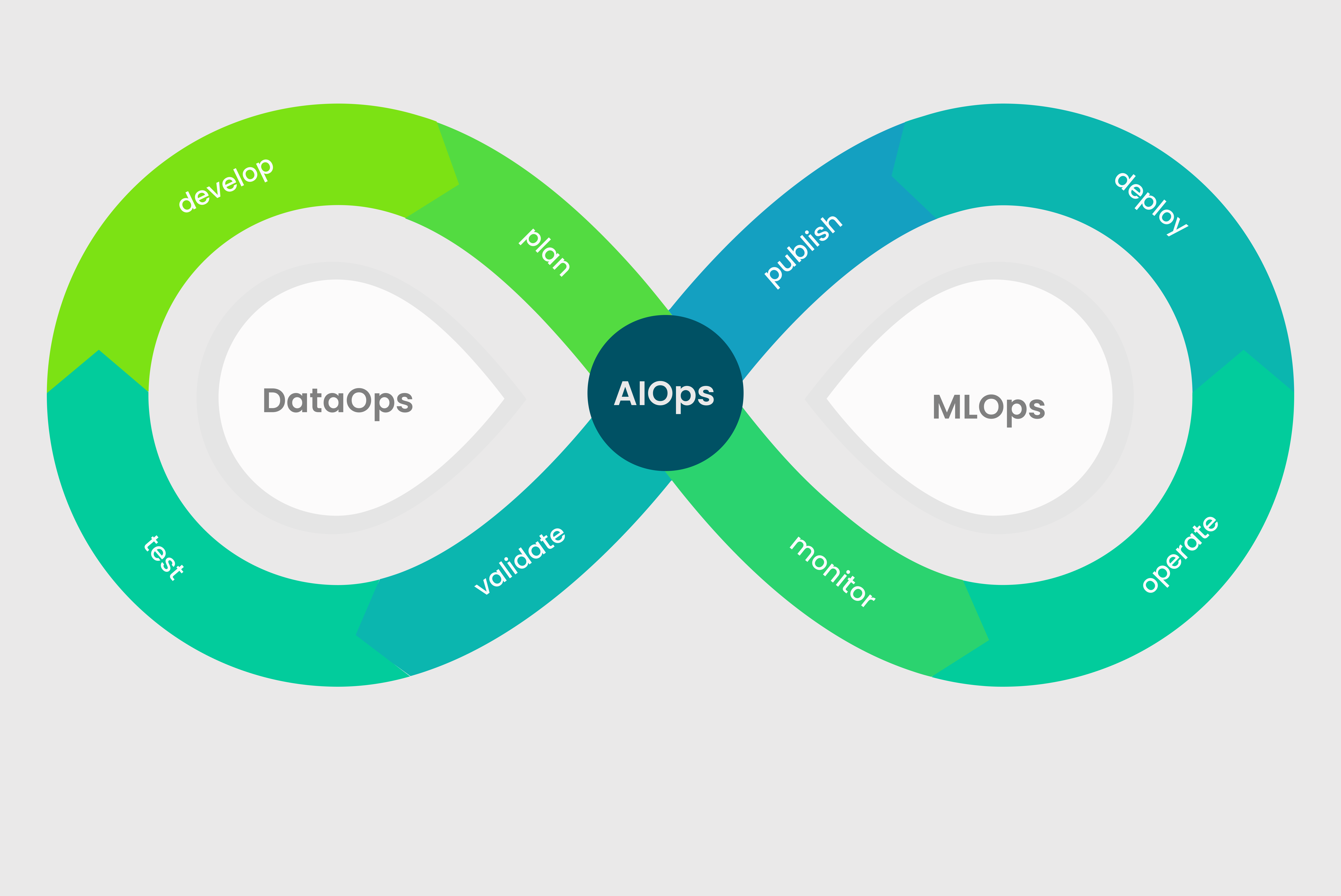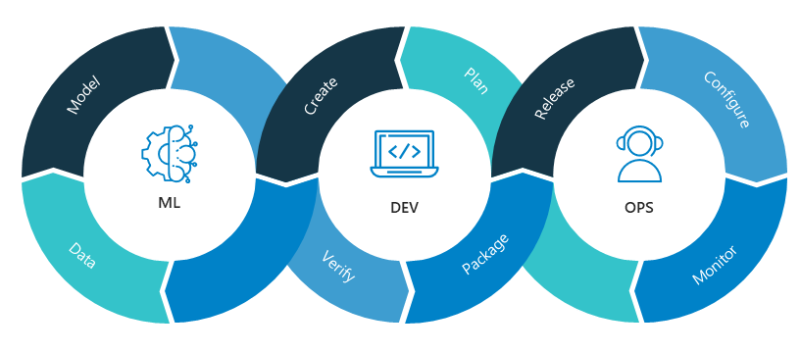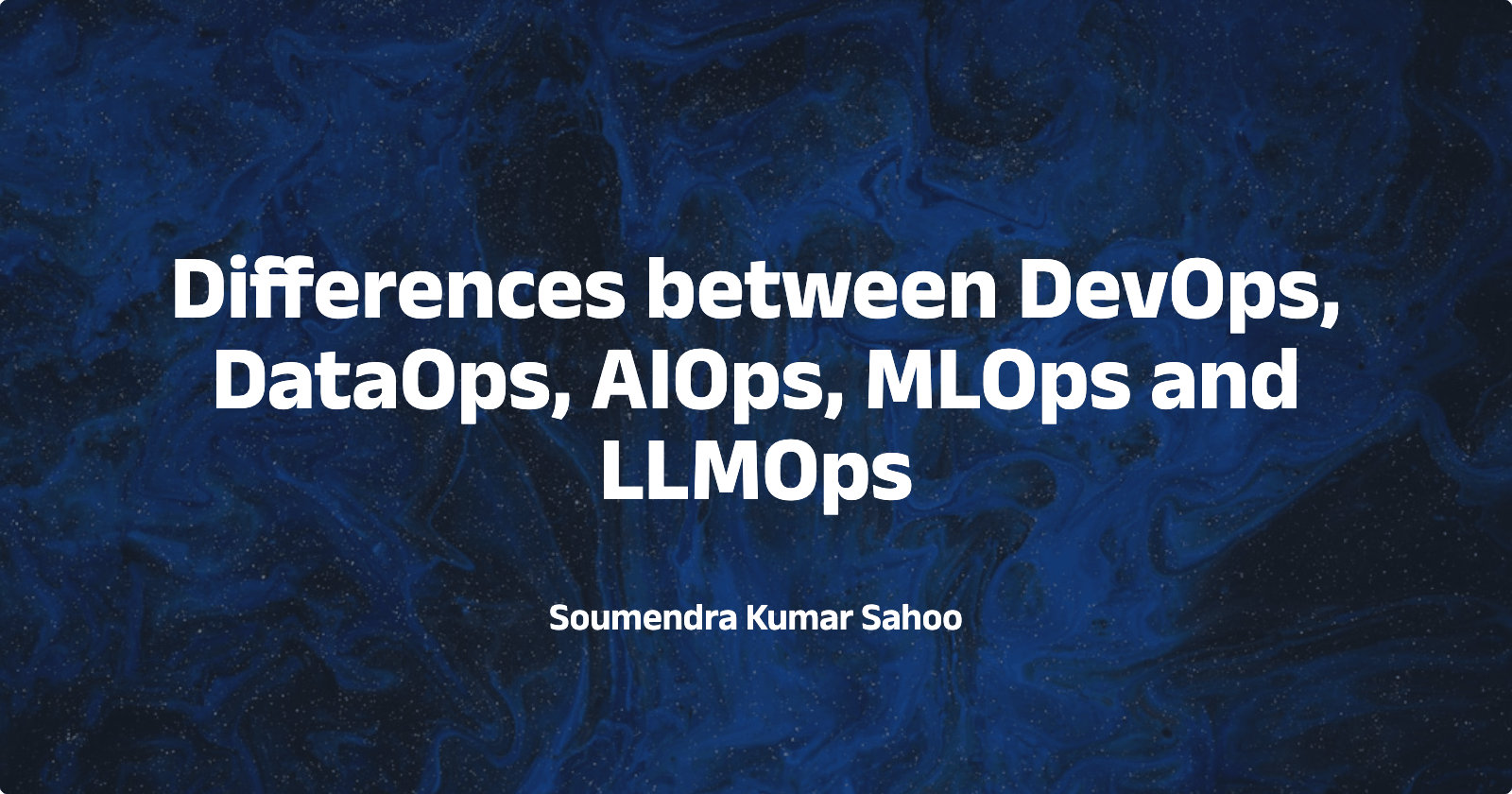Comparing DevOps, DataOps, AIOps, MLOps, and LLMOps: Key Differences
Examining the variations in their operational fields, case studies, and restrictions.
These are the commonly used terms that can be misunderstood. Here are the scope of the terms, use cases, and their limitations:
DevOps

Scope
DevOps focuses on automating the process of software development (Dev) and IT operations (Ops). It also includes a Quality Assurance team.
It aims to break down silos between these teams and accelerate the software delivery lifecycle.
Use Cases
Continuous integration and continuous delivery (CI/CD) for faster deployments.
Infrastructure as code (IaC) manages and provides infrastructure through code.
Configuration management for ensuring consistency across environments.
Monitoring and logging to identify and resolve issues proactively.
Limitations
Primarily focuses on traditional software development and may not be suitable for complex data-driven systems.
Requires a cultural shift within organizations to embrace collaboration between Dev and Ops teams.
DataOps
Scope
DataOps extends DevOps principles to data management.
It aims to automate the process of data ingestion, quality, security, transformation, integration, and delivery.
Use Cases
Automating data pipelines for moving data between sources and destinations.
Data quality checks to ensure data accuracy and consistency.
Data governance to manage access and control over data assets.
Version control for tracking changes made to data pipelines.
Limitations
Requires specialized skills in data engineering and data management.
Data security is a significant concern, and robust security practices must be implemented.
AIOps

Scope
- AIOps leverages AI to automate IT operations tasks. It uses machine learning to analyze IT data, identify anomalies, and predict potential issues.
Use Cases
Event correlation to identify root causes of incidents from various IT data sources.
Anomaly detection to proactively identify deviations from normal system behavior.
Predictive maintenance to anticipate equipment failures and schedule maintenance.
Automated incident remediation for faster resolution of IT issues.
Limitations
It relies on the quality of training data for AI models to be effective.
Explainability of AI decisions can be challenging, making it difficult to understand how AIOps arrives at its recommendations.
MLOps

Scope
- MLOps (Machine Learning Operations ) manages machine learning (ML) model lifecycle. It encompasses the entire process, from model development and training to deployment and monitoring.
Use Cases
Model training pipeline automation for streamlining the creation and training of ML models.
Model versioning tracks changes made to models and facilitates rollbacks if necessary.
Model deployment and orchestration for deploying models to production environments.
Model monitoring and drift detection ensure models continue performing well over time.
Limitations
Requires expertise in both machine learning and DevOps practices.
Managing the complexity of ML pipelines, especially in large-scale deployments, can be challenging.
LLMOps

Scope
- A relatively new concept focused on managing the lifecycle of large language models (LLMs). It aims to automate the processes involved in training, deploying, and monitoring LLMs.
Use Cases
LLM training pipeline automation is used to streamline the training process for massive datasets.
Version control for tracking changes made to LLM configurations and code.
LLM deployment and orchestration for deploying LLMs to various environments.
Monitoring and bias detection to ensure LLMs function as intended and avoid generating biased outputs.
Limitations
It is an emerging field with limited industry standards and best practices.
The computational resources required for training and running LLMs can be significant.
In essence, these practices build upon each other, with AIOps and MLOps leveraging the automation principles of DevOps for their respective domains. LLMOps is a specialized area focused on the unique challenges of managing large language models.


